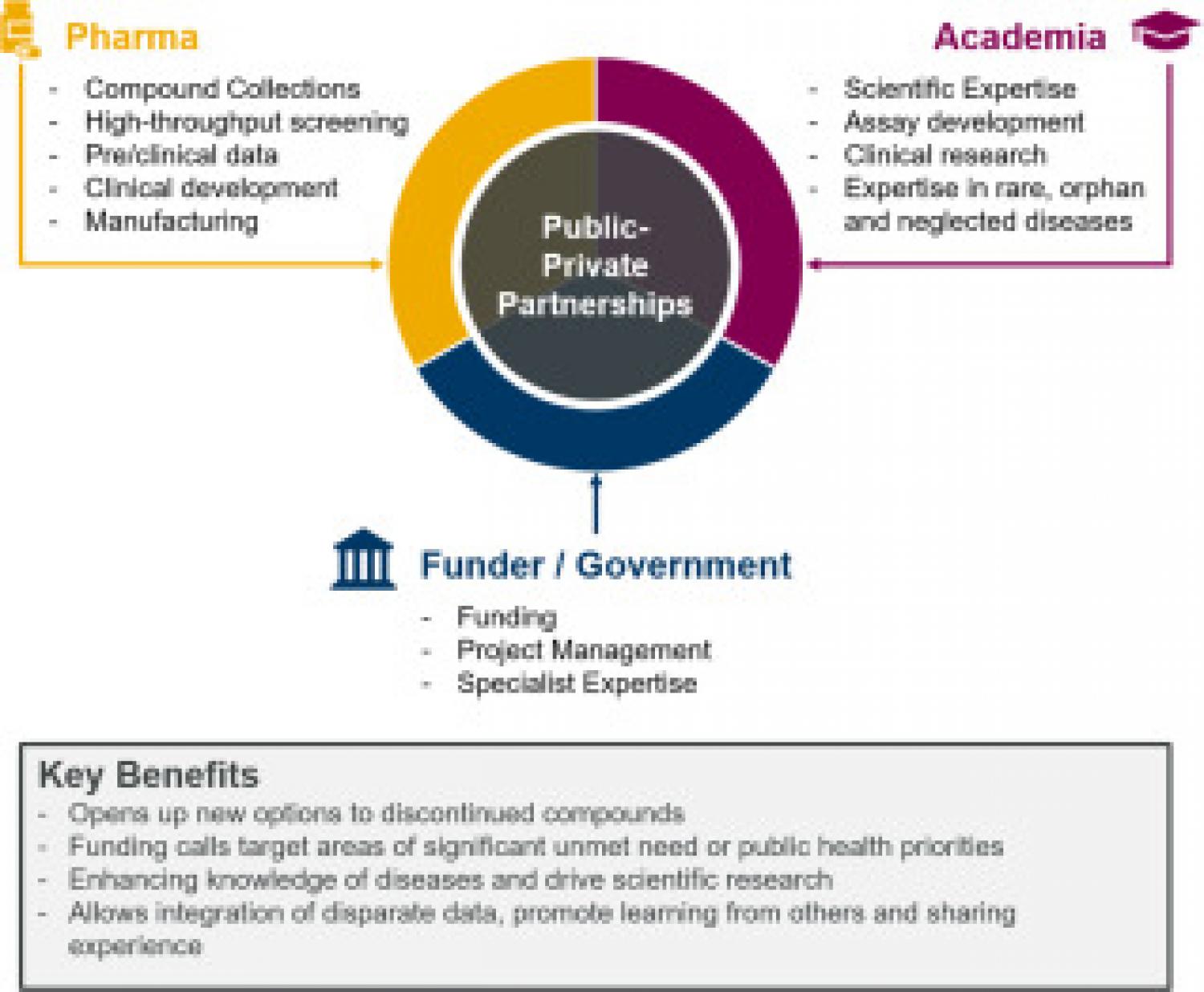
Collaborative efforts between public and private entities such as academic institutions, governments, and pharmaceutical companies form an integral part of scientific research, and notable instances of such initiatives have been created within the life science community. Several examples of alliances exist with the broad goal of collaborating toward scientific advancement and improved public welfare. Such collaborations can be essential in catalyzing breaking areas of science within high-risk or global public health strategies that may have otherwise not progressed. A common term used to describe these alliances is public-private partnership (PPP). This review discusses different aspects of such partnerships in drug discovery/development and provides example applications as well as successful case studies. Specific areas that are covered include PPPs for sharing compounds at various phases of the drug discovery process—from compound collections for hit identification to sharing clinical candidates. Instances of PPPs to support better data integration and build better machine learning models are also discussed. The review also provides examples of PPPs that address the gap in knowledge or resources among involved parties and advance drug discovery, especially in disease areas with unfulfilled and/or social needs, like neurological disorders, cancer, and neglected and rare diseases.
